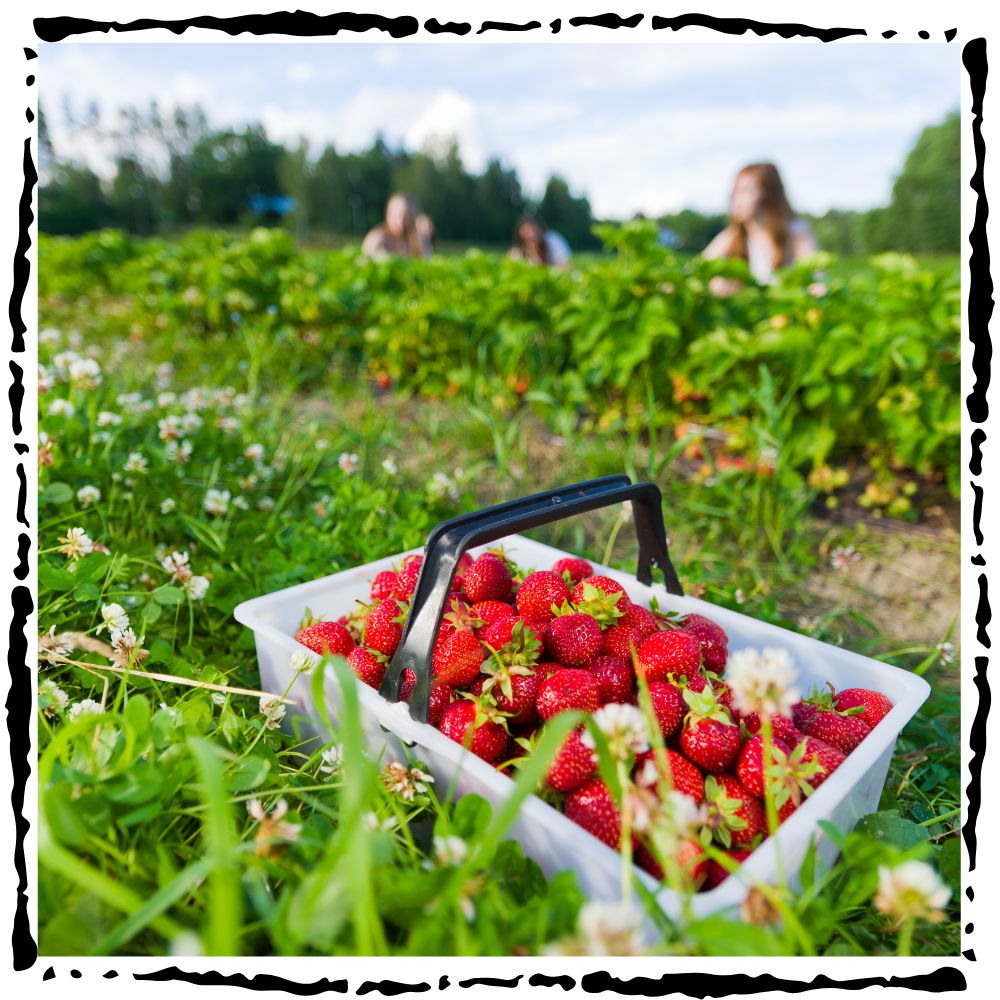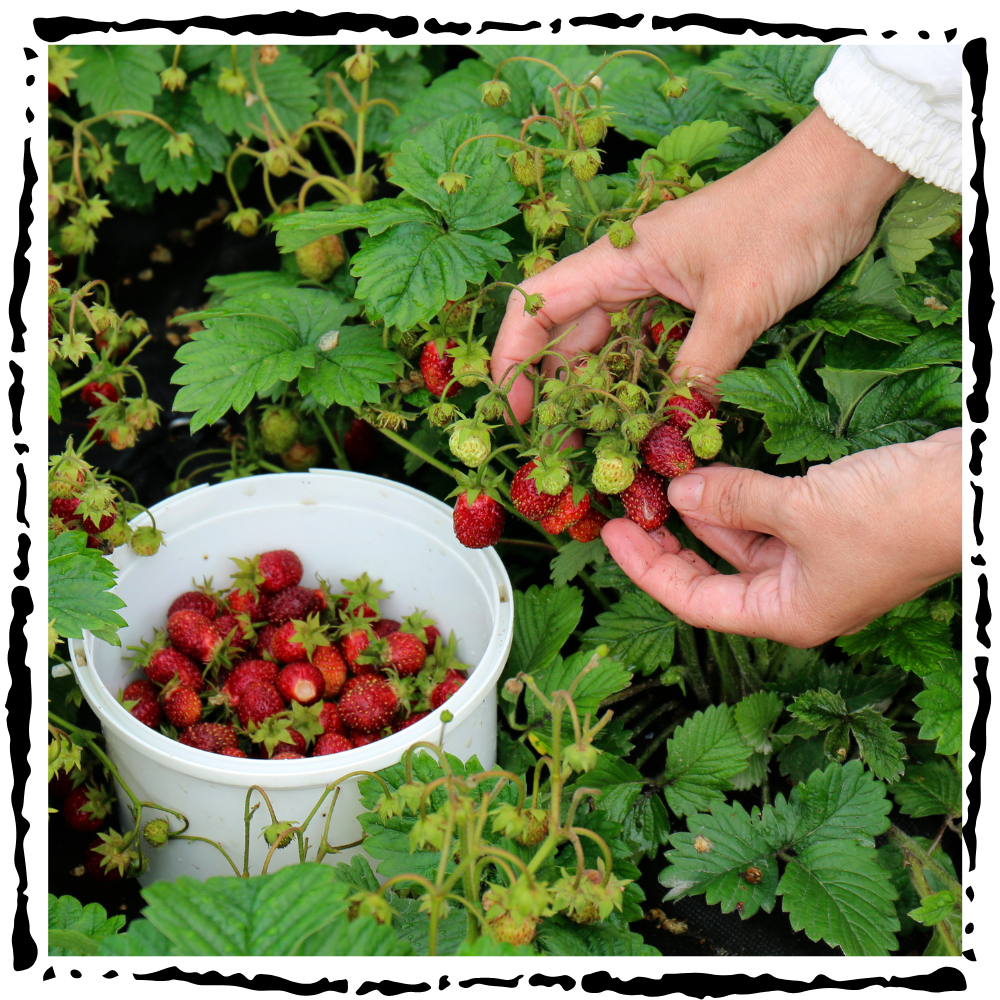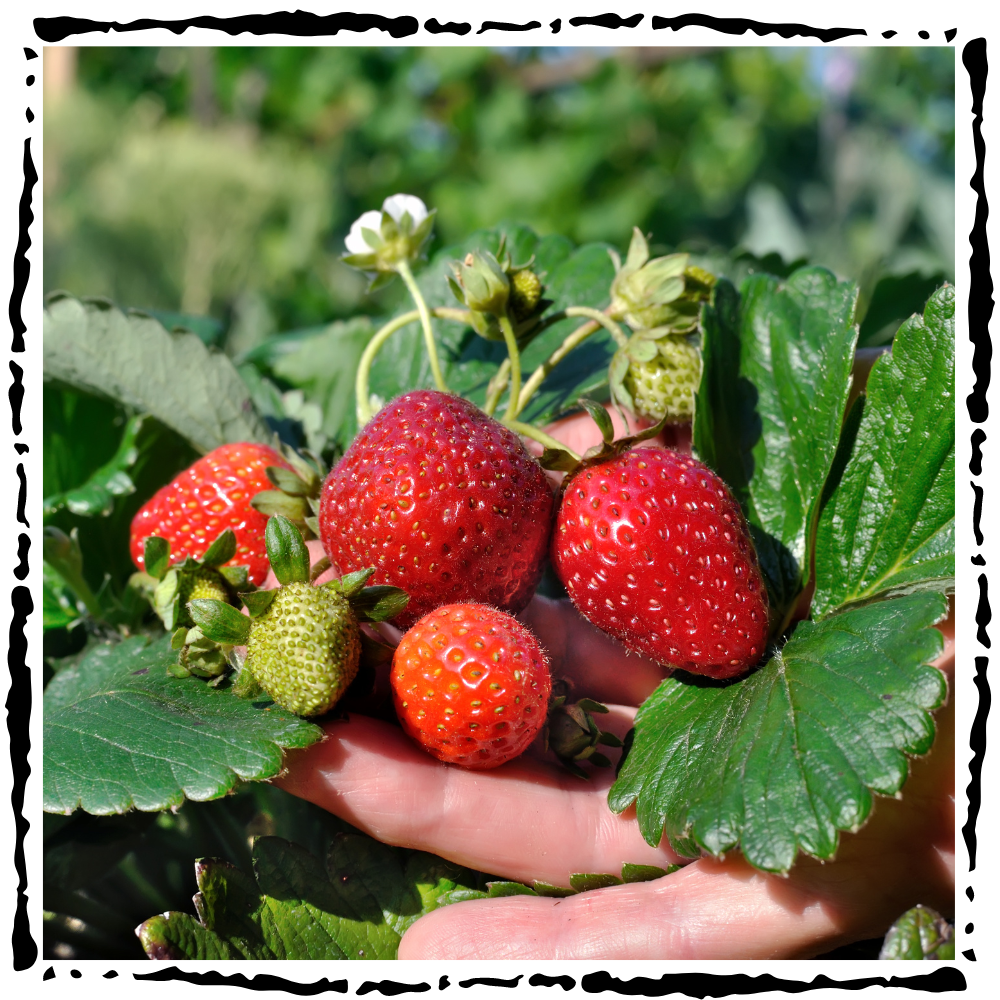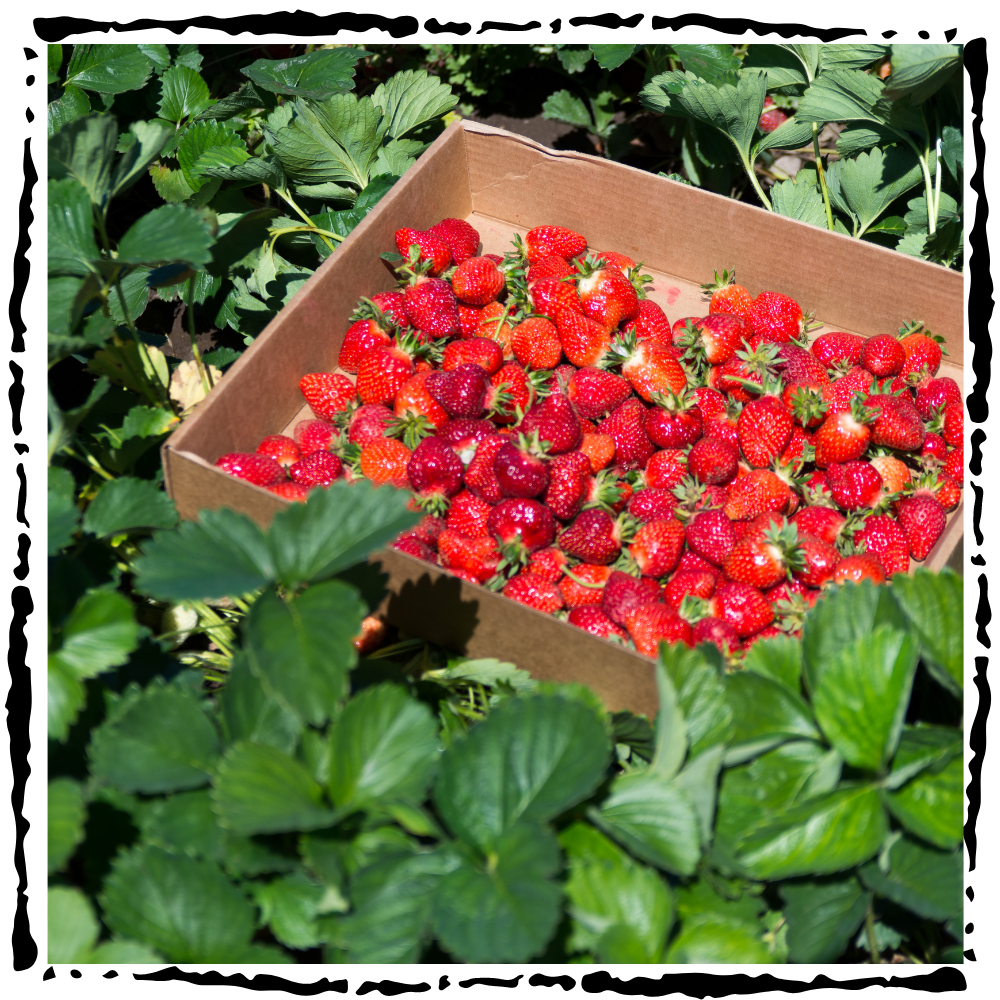
This post may contain affiliate links. As an Amazon affiliate, we earn from qualifying purchases. But we only recommend products we would use ourselves. View our Disclosure Policy here.
Growing large, luscious strawberries in your garden is a dream for many gardening enthusiasts.
Whether you’re a seasoned gardener or a beginner, there are specific strategies and tips that can help you achieve bountiful harvests of big, juicy strawberries.
In this blog post, we will delve into twelve secret tips that will transform your strawberry patch into a fruit lover’s paradise. Along the way, we’ll hear from expert gardeners and explore scientific facts that shed light on the best practices for growing strawberries.

1. Choose the Right Strawberry Variety
One of the most critical steps in growing large strawberries is selecting the right variety. Not all strawberries are created equal, and some are better suited for producing large fruits than others. Look for varieties known for their size and flavor, such as ‘Chandler,’ ‘Albion,’ and ‘Sequoia.’ These varieties have been bred specifically for their large fruit size and exceptional taste.
Additionally, consider your local climate and growing conditions when selecting a variety, as some strawberries are more suited to specific regions. For example, ‘Albion’ is an everbearing variety that thrives in warmer climates, while ‘Sequoia’ is a favorite for its large size and adaptability to various conditions.
“Choosing the right variety is half the battle won. Opt for varieties that are known for their large berries and vigorous growth.” – Lisa Mason Ziegler, Expert Gardener and Author.
2. Prepare the Soil Properly
Strawberries thrive in well-drained, fertile soil. Preparing the soil properly before planting is essential for ensuring the plants receive the nutrients they need to grow large and healthy. Start by testing your soil’s pH level. Strawberries prefer slightly acidic soil with a pH between 5.5 and 6.5. If your soil is too alkaline, you can amend it with sulfur or organic matter to lower the pH.
Strawberries have a shallow root system, which means they are particularly sensitive to soil conditions. Well-drained soil helps prevent root rot and other diseases that can stunt plant growth.
3. Plant in Raised Beds
Planting strawberries in raised beds offers several advantages. Raised beds improve drainage, prevent soil compaction, and make it easier to control soil quality. They also help keep the fruit clean and reduce the risk of disease.
Raised beds can warm up faster in the spring, giving your strawberries a head start on the growing season.
4. Provide Adequate Spacing
Proper spacing is essential for the healthy growth of strawberry plants. Crowded plants compete for nutrients and sunlight, which can result in smaller berries. Space your plants about 12 to 18 inches apart in rows that are 2 to 3 feet apart. This spacing allows for good air circulation, reducing the risk of disease and promoting larger fruit development.
5. Use Mulch to Retain Moisture
Mulching is a secret weapon in growing large strawberries. Mulch helps retain soil moisture, suppresses weeds, and keeps the fruit clean. Use organic mulch, such as straw, pine needles, or shredded leaves. Apply a layer of mulch about 2 to 3 inches thick around your plants, but avoid covering the crowns to prevent rot.

6. Water Consistently
Consistent watering is crucial for strawberry plants, especially during the fruiting period. Strawberries need about 1 to 1.5 inches of water per week. Water deeply and evenly to ensure the roots receive adequate moisture. Drip irrigation systems are ideal for strawberries as they deliver water directly to the root zone, reducing the risk of fungal diseases.
Inconsistent watering can lead to a condition known as “water stress,” which negatively affects fruit size and quality. Maintaining consistent soil moisture levels is essential for optimal strawberry growth.
7. Fertilize Wisely
Strawberries are heavy feeders and require regular fertilization to produce large berries. Start with a balanced fertilizer at planting time, and follow up with additional feedings during the growing season. Use a fertilizer high in potassium and phosphorus to promote fruit development. Avoid excessive nitrogen, as it can lead to lush foliage at the expense of fruit size.
“Feeding strawberries the right nutrients at the right time is key to achieving large, flavorful berries. Focus on potassium and phosphorus for the best results.” – David Trinklein, Horticulture Specialist.
8. Control Pests and Diseases
Pests and diseases can significantly impact the size and quality of your strawberries. Common pests include aphids, spider mites, and slugs, while diseases like powdery mildew and gray mold can wreak havoc on your plants. Implement an integrated pest management (IPM) approach that includes regular monitoring, proper sanitation, and the use of organic or chemical controls when necessary.
9. Rotate Your Crops
Crop rotation is an effective strategy to prevent soil-borne diseases and pests from building up in your strawberry patch. Avoid planting strawberries in the same location year after year.
Instead, rotate them with crops from different plant families, such as legumes or leafy greens. This practice helps break pest and disease cycles and keeps your soil healthy.
10. Prune and Thin Your Plants
Regular pruning and thinning can encourage larger fruit production. Remove runners (stolons) that divert energy away from fruit development. Trim back old, dead leaves and any diseased or damaged foliage to improve air circulation and reduce disease risk.
Thinning overcrowded plants allows remaining plants to receive more light and nutrients, promoting larger berries.

Strawberries at prime season are rich in nutrients and plump in flavor.
11. Protect from Frost
Strawberries are susceptible to frost, which can damage flowers and reduce fruit size. Protect your plants from late spring frosts by covering them with row covers or frost blankets. This simple step can prevent damage and ensure your plants produce large, healthy berries.
Additionally, consider planting your strawberries in a location that offers some natural frost protection, such as near a south-facing wall or under the canopy of taller plants. For extra protection during unexpected cold snaps, you can also use cloches or even old bed sheets to cover your plants overnight.
Ensuring proper frost protection not only safeguards your current season’s yield but also enhances the overall health and productivity of your strawberry plants in the long term.
“Proper frost protection can make a significant difference in the quality and size of your strawberry harvest. Simple measures like row covers can protect your plants during vulnerable periods.” – Mike McGrath, Host of “You Bet Your Garden.”
12. Harvest at the Right Time
Timing your harvest is crucial for maximizing fruit size and flavor. Strawberries should be picked when they are fully red and ripe.
Harvesting too early or too late can affect their size and taste. Check your plants daily during the peak harvest period and pick berries as soon as they reach full maturity.
“Harvesting strawberries at the peak of ripeness ensures the best flavor and size. Be vigilant and pick them as soon as they are fully red and plump.” – Barbara Pleasant, Gardening Expert and Author.

Additionally, it’s important to handle the berries with care when harvesting to avoid bruising or damaging them. Use a gentle twisting motion to remove the berries, leaving the green caps attached to prolong their freshness.
Early morning harvests, when the berries are cool, can also help preserve their firmness and flavor. Proper harvesting techniques ensure that your strawberries reach their maximum potential in both size and taste, providing you with the best possible yield.
Growing large strawberries is a rewarding endeavor that requires attention to detail and dedication.
By following these twelve secret tips, you can transform your strawberry patch into a haven of big, juicy berries.
Remember to choose the right variety, prepare your soil, and provide consistent care throughout the growing season. With a little effort and the right techniques, you’ll be enjoying a bountiful harvest of delicious strawberries in no time.
Additionally, keep in mind that patience and observation are key. Each season brings new learning opportunities, and by carefully monitoring your plants and adjusting your practices, you can continually improve your results.
Sharing your experiences and tips with fellow gardeners can also be a valuable resource, fostering a community of knowledge and support. Happy gardening!
Other articles you may find interesting. We hope you enjoy our tips, tricks, and ideas.
